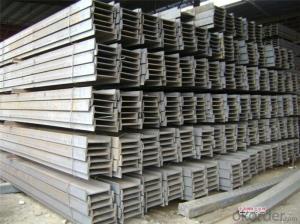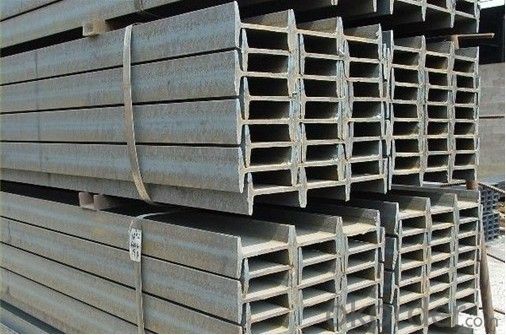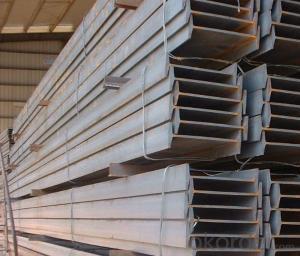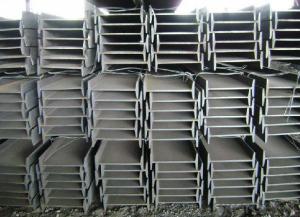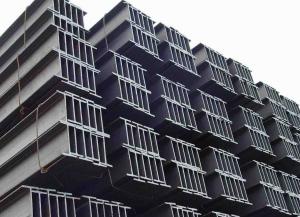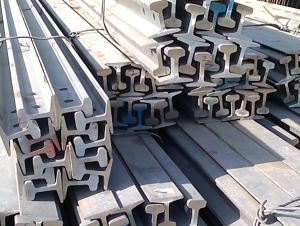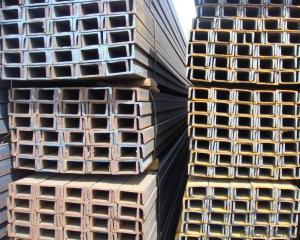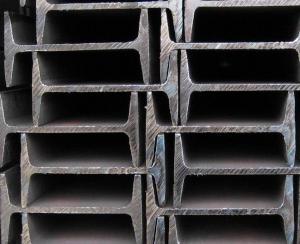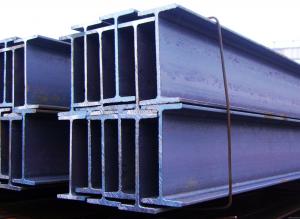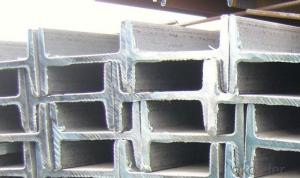Hot Rolled IPE and IPEAA Beam with Q235B Grade
- Loading Port:
- Tianjin
- Payment Terms:
- TT OR LC
- Min Order Qty:
- 25 m.t.
- Supply Capability:
- 10000 m.t./month
OKorder Service Pledge
OKorder Financial Service
You Might Also Like
Product Description:
OKorder is offering high quality Hot Rolled Steel I-Beams at great prices with worldwide shipping. Our supplier is a world-class manufacturer of steel, with our products utilized the world over. OKorder annually supplies products to European, North American and Asian markets. We provide quotations within 24 hours of receiving an inquiry and guarantee competitive prices.
Product Applications:
Hot Rolled Steel I-Beams are ideal for structural applications and are widely used in the construction of buildings and bridges, and the manufacturing, petrochemical, and transportation industries.
Product Advantages:
OKorder's Steel I-Beams are durable, strong, and resist corrosion.
Main Product Features:
· Premium quality
· Prompt delivery & seaworthy packing (30 days after receiving deposit)
· Corrosion resistance
· Can be recycled and reused
· Mill test certification
· Professional Service
· Competitive pricing
Product Specifications:
Manufacture: Hot rolled
Grade: Q195 – 235
Certificates: ISO, SGS, BV, CIQ
Length: 6m – 12m, as per customer request
Packaging: Export packing, nude packing, bundled
Chinese Standard (H*W*T) | Weight (Kg/m) | 6m (pcs/ton) | Light I (H*W*T) | Weight (Kg/m) | 6m (pcs/ton) | Light II (H*W*T) | Weight (Kg/m) | 6M |
100*68*4.5 | 11.261 | 14.8 | 100*66*4.3 | 10.13 | 16.4 | 100*64*4 | 8.45 | 19.7 |
120*74*5.0 | 13.987 | 11.9 | 120*72*4.8 | 12.59 | 13.2 | 120*70*4.5 | 10.49 | 15.8 |
140*80*5.5 | 16.89 | 9.8 | 140*78*5.3 | 15.2 | 10.9 | 140*76*5 | 12.67 | 13.1 |
160*88*6 | 20.513 | 8.1 | 160*86*5.8 | 18.46 | 9 | 160*84*5.5 | 15.38 | 10.8 |
180*94*6.5 | 24.143 | 6.9 | 180*92*6.3 | 21.73 | 7.6 | 180*90*6 | 18.11 | 9.2 |
200*100*7 | 27.929 | 5.9 | 200*98*6.8 | 25.14 | 6.6 | 200*96*6.5 | 20.95 | 7.9 |
220*110*7.5 | 33.07 | 5 | 220*108*7.3 | 29.76 | 5.6 | 220*106*7 | 24.8 | 6.7 |
250*116*8 | 38.105 | 4.3 | 250*114*7.8 | 34.29 | 4.8 | 250*112*7.5 | 28.58 | 5.8 |
280*122*8.5 | 43.492 | 3.8 | 280*120*8.2 | 39.14 | 4.2 | 280*120*8 | 36.97 | 4.5 |
300*126*9 | 48.084 | 3.4 | 300*124*9.2 | 43.28 | 3.8 | 300*124*8.5 | 40.87 | 4 |
320*130*9.5 | 52.717 | 3.1 | 320*127*9.2 | 48.5 | 3.4 | |||
360*136*10 | 60.037 | 2.7 | 360*132*9.5 | 55.23 | 3 |
FAQ:
Q1: Why buy Materials & Equipment from OKorder.com?
A1: All products offered byOKorder.com are carefully selected from China's most reliable manufacturing enterprises. Through its ISO certifications, OKorder.com adheres to the highest standards and a commitment to supply chain safety and customer satisfaction.
Q2: What makes stainless steel stainless?
A2: Stainless steel must contain at least 10.5 % chromium. It is this element that reacts with the oxygen in the air to form a complex chrome-oxide surface layer that is invisible but strong enough to prevent further oxygen from "staining" (rusting) the surface. Higher levels of chromium and the addition of other alloying elements such as nickel and molybdenum enhance this surface layer and improve the corrosion resistance of the stainless material.
Q3: Can stainless steel rust?
A3: Stainless does not "rust" as you think of regular steel rusting with a red oxide on the surface that flakes off. If you see red rust it is probably due to some iron particles that have contaminated the surface of the stainless steel and it is these iron particles that are rusting. Look at the source of the rusting and see if you can remove it from the surface.
Images:
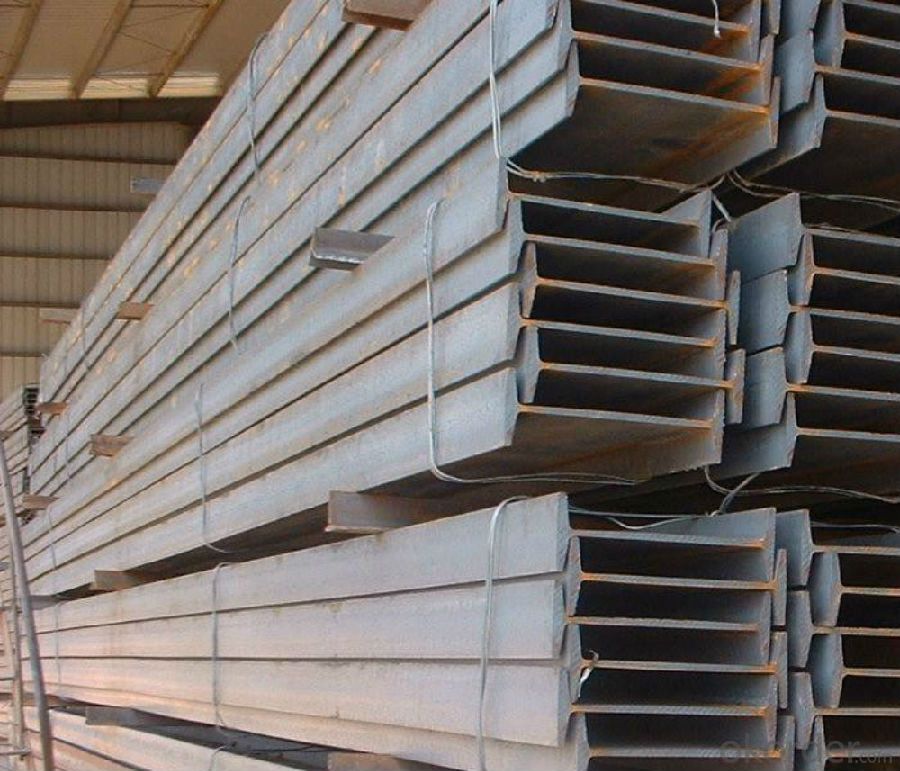
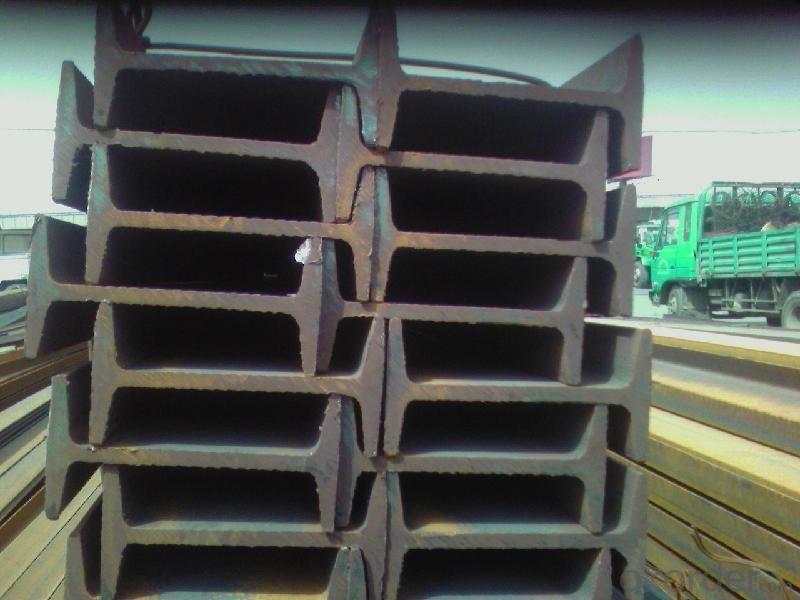

- Q: What are the different types of steel I-beam profiles available?
- There are several different types of steel I-beam profiles available, including standard, wide flange, and H-beam. Standard I-beams have a tapered flange, while wide flange I-beams have a wider flange and are often used in larger structural applications. H-beams have a wider flange than standard I-beams and are commonly used in construction projects that require a high load-bearing capacity.
- Q: Can Steel I-Beams be used for mezzanine storage?
- Certainly! Mezzanine storage can indeed utilize steel I-beams. Construction often employs steel I-beams due to their robustness and ability to bear substantial loads. They are well-suited for supporting heavy weights and can endure the mezzanine structure's weight and the stored items. To provide a secure and stable foundation for the mezzanine floor, the I-beams can be firmly bolted or welded into position. Furthermore, steel I-beams can be tailored to meet specific design criteria and easily integrated into existing structures. All in all, steel I-beams are a dependable and effective choice for supporting mezzanine storage systems.
- Q: Can steel I-beams be used in the construction of shopping malls?
- Yes, steel I-beams can definitely be used in the construction of shopping malls. Steel I-beams are widely used as a structural component in construction due to their strength, durability, and versatility. They are known for their ability to support heavy loads and provide excellent structural stability. In the case of shopping malls, where large open spaces and long spans are common, steel I-beams are particularly suitable. They can be used to create wide, open floor plans and support the weight of multiple floors, as well as provide support for escalators, elevators, and other vertical transportation systems. Additionally, steel I-beams are often chosen for their fire resistance and ability to withstand extreme weather conditions. Overall, steel I-beams are a popular choice in the construction of shopping malls due to their strength, reliability, and flexibility in design.
- Q: What are the considerations for constructability and ease of installation with steel I-beams?
- When considering the constructability and ease of installation with steel I-beams, there are several important factors to take into account. Firstly, it is crucial to assess the size and weight of the I-beams to ensure that they can be safely transported and maneuvered on the construction site. The size and weight of the beams should be compatible with the available equipment and lifting capabilities. If the beams are too large or heavy, it may require specialized lifting equipment or additional support structures, increasing the complexity and cost of installation. Another consideration is the connection details between the I-beams and other structural elements. The connections should be designed to be easily assembled and secured, ensuring a stable and durable structure. Pre-drilled holes, bolted connections, or welding techniques can be employed to simplify the installation process. Additionally, planning for the erection sequence is essential for constructability. This involves determining the order in which the beams will be installed, considering factors such as access, lifting points, and the need for temporary supports. A well-thought-out erection sequence can streamline the installation process and minimize potential conflicts or delays. The availability and coordination of skilled labor is also an important consideration. Adequate training and experience are necessary when working with steel I-beams to ensure proper handling, alignment, and connection. Therefore, it is crucial to have a skilled workforce familiar with the specific requirements of steel beam installation. Lastly, considering constructability and ease of installation should also involve evaluating the overall project schedule. Any challenges or complexities associated with the installation of steel I-beams need to be accounted for in the project timeline. This ensures that the installation process does not cause unnecessary delays or disruptions to the overall construction progress. In conclusion, the considerations for constructability and ease of installation with steel I-beams include assessing the size and weight of the beams, designing efficient connection details, planning the erection sequence, ensuring the availability of skilled labor, and incorporating the installation process into the project schedule. By addressing these factors, the installation of steel I-beams can be streamlined, ensuring a successful and efficient construction process.
- Q: Are steel I-beams resistant to impact or blast loads?
- Steel I-beams are renowned for their exceptional strength and durability, rendering them highly suitable for a diverse array of structural uses. When it comes to withstanding impact or blast loads, steel I-beams generally demonstrate outstanding performance. Under the influence of impact loads, such as collisions or the descent of hefty objects, steel I-beams possess a formidable capacity to absorb and distribute the applied force. The structural attributes of steel, including its remarkable tensile strength and ductility, allow it to deform and absorb energy without incurring significant damage. As a result, steel I-beams exhibit greater resistance to impact loads when compared to alternative materials. In the same vein, steel I-beams also provide substantial resistance against blast loads, which encompass sudden and high-intensity pressure waves generated by explosions. The intrinsic strength and stiffness of steel empower it to withstand the dynamic forces that accompany blast loads. Moreover, the weight and rigidity of steel I-beams contribute to their capacity to counteract pressure and disseminate the energy unleashed by a blast. One must bear in mind that the specific resistance of steel I-beams to impact or blast loads can fluctuate based on factors such as the beam's size and design, the type and magnitude of the load, and the overall structural configuration. Consequently, conducting engineering analysis and considering design aspects are indispensable in ensuring the fitting selection and placement of steel I-beams that can withstand impact or blast loads in any given application.
- Q: What are the considerations for sound insulation when using steel I-beams?
- Some considerations for sound insulation when using steel I-beams include the thickness and material of the insulation used, the design and construction of the building, and the placement of the beams in relation to the areas that require soundproofing. Additionally, any openings or penetrations in the insulation should be properly sealed to prevent sound leakage.
- Q: Are steel I-beams resistant to rot or decay?
- Contrary to wood, steel I-beams do not possess resistance to rot or decay. This is due to the fact that steel does not absorb moisture, rendering it impervious to rotting or decaying. The utilization of steel I-beams in construction endeavors is primarily driven by their robustness and ability to withstand environmental elements. Specifically engineered to endure substantial loads and combat corrosion, these beams prove to be an enduring and dependable option for providing structural support.
- Q: What are the safety considerations when working with steel I-beams?
- When dealing with steel I-beams, it is essential to keep in mind several crucial safety considerations. These considerations encompass: 1. Personal protective equipment (PPE): Wearing the appropriate PPE, including hard hats, safety glasses, gloves, and steel-toed boots, is vital. This ensures protection against potential injuries and falling objects. 2. Lifting and handling: Correctly lifting and handling steel I-beams is of utmost importance due to their weight and associated risks. Proper lifting techniques, such as using cranes or forklifts with suitable weight capacities, should be employed. Additionally, the load must be evenly distributed and securely fastened. 3. Structural stability: Prior to commencing work with steel I-beams, it is crucial to verify their structural stability. This entails inspecting for any signs of damage, such as cracks or bends, and ensuring proper anchoring or support. 4. Fall prevention: When working at heights or on elevated platforms, implementing fall prevention measures is essential. This may include the use of guardrails, safety harnesses, or safety nets to prevent falls and safeguard workers against potential injuries. 5. Communication and coordination: Effective communication and coordination among workers are paramount. Clear communication regarding tasks, movements, and potential hazards can help prevent accidents and ensure overall workplace safety. 6. Training and supervision: Adequate training and supervision play a vital role when working with steel I-beams. Workers should receive training on safe work practices, equipment usage, and emergency procedures. Proper supervision helps identify potential hazards and ensures adherence to safety protocols. 7. Fire prevention: Steel I-beams are susceptible to fire, necessitating the implementation of fire prevention measures. This includes appropriate storage and handling of flammable materials, provision of adequate fire extinguishers, and the establishment of an emergency evacuation plan. By giving priority to these safety considerations, workers can minimize risks and establish a safer work environment when dealing with steel I-beams.
- Q: Can steel I-beams be used in the construction of bridges?
- Yes, steel I-beams can be used in the construction of bridges. Steel I-beams are commonly used in bridge construction due to their strength, durability, and versatility. They are designed to withstand heavy loads and provide excellent structural support, making them ideal for spanning large distances. Steel I-beams can be manufactured to specific dimensions and specifications, allowing engineers to tailor them to the unique requirements of each bridge project. Additionally, steel I-beams can be easily fabricated and transported, making them a cost-effective and practical choice for bridge construction. Overall, steel I-beams are a popular choice in the construction of bridges due to their superior strength, flexibility, and efficiency.
- Q: Can steel I-beams be used in the construction of convention centers?
- Yes, steel I-beams can be used in the construction of convention centers. Steel I-beams are commonly used in construction projects due to their strength, durability, and ability to support heavy loads over long spans. Convention centers often require large open spaces and flexible design options, which can be achieved using steel I-beams as structural elements.
Send your message to us
Hot Rolled IPE and IPEAA Beam with Q235B Grade
- Loading Port:
- Tianjin
- Payment Terms:
- TT OR LC
- Min Order Qty:
- 25 m.t.
- Supply Capability:
- 10000 m.t./month
OKorder Service Pledge
OKorder Financial Service
Similar products
Hot products
Hot Searches
Related keywords
